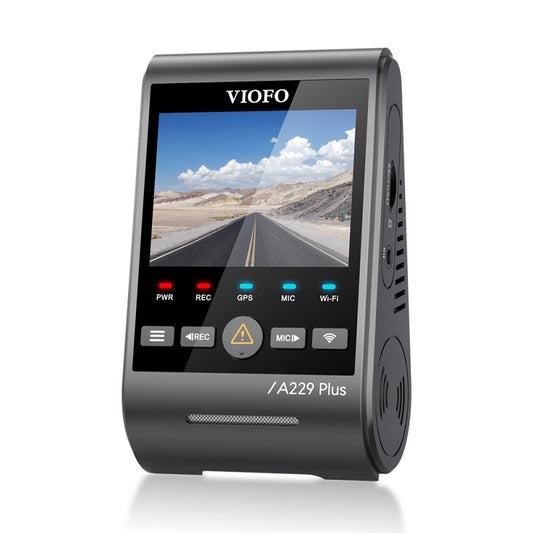What is a 1 channel dash camera?
You may wonder, what 1-channel dash cams are. In simple terms, these are dash cams that have only one camera in box. They serve as a single point of view camera. The word “channel” simply refers to the amount of cameras that are included in the box and installed in the car. Therefore, single-channel dash cams record only what is happening in front of your car.
Perfect entry level dash camera
Safe Drive Solutions team recommends single camera dash cams as a perfect entry-level camera. They do not come as a significant investment yet offer a wide range of perks and introduce you to the world of high-quality dash cams.
Compare single channel and dual channel
Experienced drivers oftentimes compare single-channel and dual-channel dash cams. They tend to prefer the latter ones, although we believe that single cameras do also offer amazing benefits. All single-channel dash cams that you can find at Safe Drive Solutions are of higher quality than most. They are carefully selected by our dash cam experts. Thus, you do not need to worry about the quality of single camera dash cams when shopping at our online store.
Benefits of 1 channel dash camera
The benefits that 1-channel dash cams present are truly outstanding: many of modern dash cameras come with an in-built WiFi function that allows you to connect your smartphone or PC to the device to download all necessary recordings directly from the camera, change settings or simply review the videos.
Moreover, a significant number of single-channel dash cams allow to store recordings in cloud-based storage which saves up a lot of space on your memory card so you do not
need to worry about carrying an extra one with you at all times. Other useful features that 1-channel dash cams include can be GPS system, 4K
video quality, rugged durable casing and various parking modes to continue recording when you are out and about.
Shop 1 Channel Dash Cams from the catalogue above, and start your dash cam journey now!
Get a Free Quote Today. Click Here
Frequently Asked Questions
The best place to install a car front facing camera is on the front windshield, next to the rearview mirror.
This offers a good angle for seeing what’s going on in the front of the car while keeping the dash cam out of the line of vision for the driver.
You can tuck dash cam wires into the grooves along the windshield, then down behind the weather stripping along the door. There are gaps between the plastic and upholstery of the dash and seats in most cars. For more information, see Safe Drive Solutions’ how-to videos.
Most high quality dash cams have an associated app. Simply download the app onto your computer or mobile device, log in, and you’ll be able to monitor the camera footage in real time, as well as download, store, and share it.
No, not every car front facing camera has a parking mode. The basic models will turn off when your car is not running, so you will not be able to see what’s happening with your vehicle while you’re away. The batteries in high quality dash cams, on the other hand, draw power from the car while it’s driving and use that stored power for parking mode.
A front camera for car usage will usually offer a wide view angle between 130 and 160 degrees. While a wider angle means more coverage, too wide an angle and your footage will be distorted. A good range to look for is between 140 and 150 degrees.




